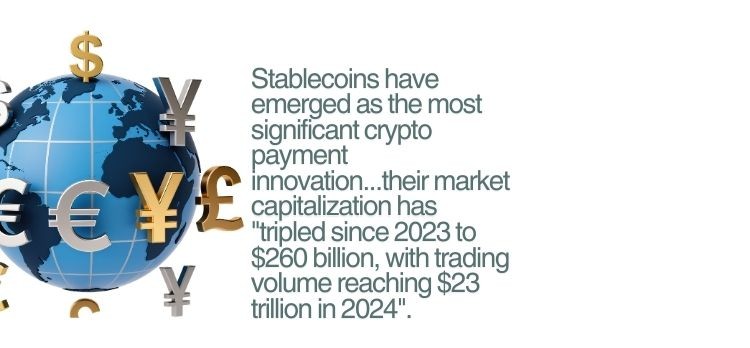Top AI & Data Science Institute in India
11+ years of expertise, 3000+ successful alumni, industry-focused AI and Data Science courses with placement success.




3000+ successful alumni
Top AI & Data Science Institute in India
11+ years of expertise, 3000+ successful alumni, industry-focused AI and Data Science courses with placement success.




3800+
successful alumni
+
Students and alumni
+
Students and alumni
+
Hiring companies
+ Hrs
Training hours
%
Avg hike post program
Praxis Learning Model That Transforms Careers
Transform your future - master core skills, learn through real projects, and tackle live industry challenges.
Core AI analytical skills
550+ learning hours

Core AI analytical skills
550+ learning hours

Core AI analytical skills
550+ learning hours

Hands-on Capstone Projects
1000+ competitive projects

Hands-on Capstone Projects
1000+ competitive projects

Hands-on Capstone Projects
1000+ competitive projects

Cutting edge research
100+ Research Papers

Cutting edge research
100+ Research Papers

Cutting edge research
100+ Research Papers

Career mentorship
100 Hours of Career mentorship

Career mentorship
100 Hours of Career mentorship

Career mentorship
100 Hours of Career mentorship

Praxis Tech School flagship program
Praxis Tech School flagship program
Explore India's leading program in AI & Data science skills with over 40 successful batches.
Explore India's leading program in AI & Data science skills with over 40 successful batches.
Programs offered in online mode
Programs offered in online mode
Upskill with flexible programs that fit your schedule.
Upskill with flexible programs that fit your schedule.
Praxis Tech School Placement Partner
Praxis Tech School Placement Partner
Praxis Tech School Placement Partner
Academic Excellence at Praxis Tech School
Academic Excellence at Praxis Tech School
Praxis is recognized for its academic excellence, industry relevance, and career-focused learning.
Praxis is recognized for its academic excellence, industry relevance, and career-focused learning.
40+
Successful batches

Recognized

Ranked #1 Analytics India Magazine
1100+
Global alumni network
Thought Leadership
Upskill with flexible programs that fit your schedule.
Upskill with flexible programs that fit your schedule.
Who Should Join Praxis?
Who Should Join Praxis?
Freshers

Freshers

Career Switcher

Career Switcher

Career Gap Professional

Career Gap Professional

Upskillers

Upskillers

Fresher

Carrier switcher

Career Gap

Upsacle

Freshers

Career Switcher

Career Gap Professional

Upskillers

Fresher

Carrier switcher

Career Gap

Upsacle

Transform Your Career Journey With Praxis
Transform Your Career Journey With Praxis
Whether you're a fresher or a professional looking to upskill, Praxis helps you in your career journey.
Whether you're a fresher or a professional looking to upskill, Praxis helps you in your career journey.
Learn from Expert Faculty & Industry Leaders
Learn from Expert Faculty & Industry Leaders
Master future-ready skills from industry leaders, experienced faculty and work on real-world projects.
Master future-ready skills from industry leaders, experienced faculty and work on real-world projects.

Dr. Sourav Saha
Dean of Academics and Director of Data Science
Worked at

Sourav, a Machine Learning professional turned educator, has 20+ yrs in analytics, consulting & R&D. An FPM from IIM Calcutta, he designs impactful AI-driven programs and applies tech for social good.

Prof. Charanpreet Singh
Co-founder & Professor
Worked at

Charanpreet, (IIT K & Iowa MBA) brings 20 yrs of corporate experience across steel, consulting & IT. A Chevening Scholar, co-founder of Praxis, he blends industry insights with teaching at leading B-schools.

Dr. Prithwis Mukerjee
Director
Worked at

Engineer, educator & imagineer, Dr. Prithwis blends tech with business. Ex-IBM & IIT KGP professor, now Director at Praxis, he pioneers in data, big tech trends & authorship in Python, AI & sci-fi.

Dr. Sayantani Roy Choudhury
Professor
Program Chair, FPM
Dr. Sayantani, PhD in Economics, has 20+ yrs of teaching & research. Visiting faculty at IIMs, she has 15 journal papers, 5 book chapters & 1 book, with expertise in labor economics & data-driven social research.

Prof. Jaydip Sen
Professor
Worked at

Jaydip, with 165+ publications, is a researcher in ML, AI & cybersecurity. Ex-Oracle, Akamai & TCS, he is a Senior Member of ACM & IEEE, known for his global keynotes and contributions to secure networks.

Dr. Sridhar Srinivasan
Professor
Worked at

With 30 yrs in IT services, Dr. Sridhar led BI, Analytics & Big Data practices at Wipro, Brillio & WinWire. An IIM Lucknow PhD, he now teaches data, digital transformation & analytics at top B-schools.

Dr. Sourav Saha
Dean of Academics and Director of Data Science
Worked at

Sourav, a Machine Learning professional turned educator, has 20+ yrs in analytics, consulting & R&D. An FPM from IIM Calcutta, he designs impactful AI-driven programs and applies tech for social good.

Prof. Charanpreet Singh
Co-founder & Professor
Worked at

Charanpreet, (IIT K & Iowa MBA) brings 20 yrs of corporate experience across steel, consulting & IT. A Chevening Scholar, co-founder of Praxis, he blends industry insights with teaching at leading B-schools.

Dr. Prithwis Mukerjee
Director
Worked at

Engineer, educator & imagineer, Dr. Prithwis blends tech with business. Ex-IBM & IIT KGP professor, now Director at Praxis, he pioneers in data, big tech trends & authorship in Python, AI & sci-fi.

Dr. Sayantani Roy Choudhury
Professor
Program Chair, FPM
Dr. Sayantani, PhD in Economics, has 20+ yrs of teaching & research. Visiting faculty at IIMs, she has 15 journal papers, 5 book chapters & 1 book, with expertise in labor economics & data-driven social research.

Prof. Jaydip Sen
Professor
Worked at

Jaydip, with 165+ publications, is a researcher in ML, AI & cybersecurity. Ex-Oracle, Akamai & TCS, he is a Senior Member of ACM & IEEE, known for his global keynotes and contributions to secure networks.

Dr. Sridhar Srinivasan
Professor
Worked at

With 30 yrs in IT services, Dr. Sridhar led BI, Analytics & Big Data practices at Wipro, Brillio & WinWire. An IIM Lucknow PhD, he now teaches data, digital transformation & analytics at top B-schools.

Prof. Regi Mathew
Professor
Worked at

Regi, Fellow of IIM Ahmedabad, has 20+ yrs across academia & industry. Ex-IGATE, Genpact & IRI, he developed NMIMS’s MBA Analytics track & now trains students & corporates in data science & consulting.

Prof. Subhasis Dasgupta
Professor
Data Mining using R and Python
Subhasis, PhD in Text Mining, has 12+ yrs in academics & 4 yrs at HPCL. Ex-Research Associate at IIM A, he teaches ML, DL & NLP, with research in text mining, and conducts corporate training for top firms like Infosys & ICICI.

Dr. Kankana Mukhopadhyay
Professor
Skilled in handling FDPs and MDPs
Kankana, PhD in Management, has 21 yrs in teaching & research in HR. Ex-IIEST & IIPM, she has published widely, trained corporates & govt. institutions, and serves on editorial & doctoral committees.

Prof. Deepak Mohanty
Guest faculty
Worked at

Deepak brings 20 yrs of global corporate expertise across consulting, product mgmt & digital transformation. An engineer & MBA from XIMB, he has led large cross-functional teams in business & tech.

Prof. Preeti Ravikiran
Guest faculty
Worked at

With 26 yrs in IT & 7 yrs teaching, Preeti blends industry & academics in data science. An MBA & NET-qualified professor, she specializes in statistics, ML & visual analytics with a practical approach.

Prof. Prasenjit Das Purkayastha
Guest faculty
Data Science, Analytics, Marketing Research
Prasenjit, ex-Nielsen & IMRB leader, is a renowned market researcher with expertise across industries. He teaches marketing research & analytics at top institutes and trains corporates nationwide.

Prof. Manoj Cyriac
Guest faculty
worked at

Manoj has 20+ yrs of experience across IT, leadership & education. Ex-Senior Manager at Accenture, he now mentors students & professionals in analytics, tech & life skills.

Prof. Atanu Ghosh
Guest faculty
Worked at

Atanu, ex-IBM & PwC leader, is Founder-CEO of Bluebeaks Solutions. An angel investor & board advisor, he teaches & consults in digital business, marketing, analytics & e-commerce across corporates & B-schools.

Prof. Amit Parakh
Guest faculty
Worked at

Amit, IIM A alum & finance professional, has worked at ICICI Bank & J.P. Morgan in valuation, credit models & structured products. He now teaches financial analytics, risk mgmt & CFA/FRM/CA prep programs.






























